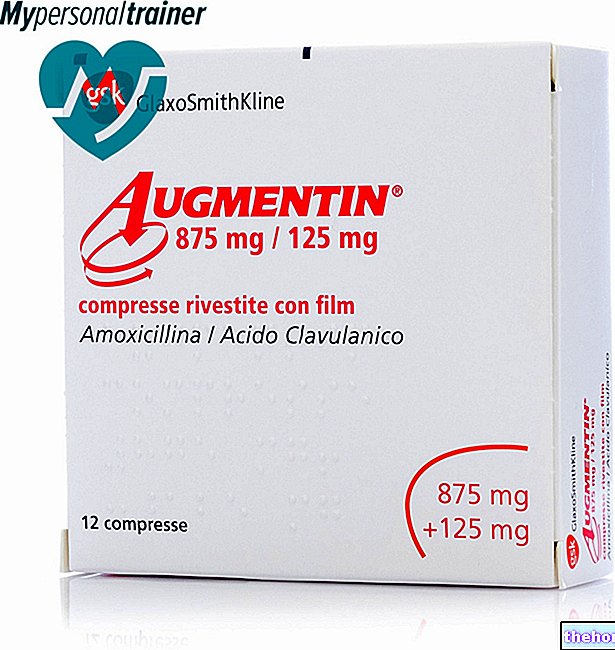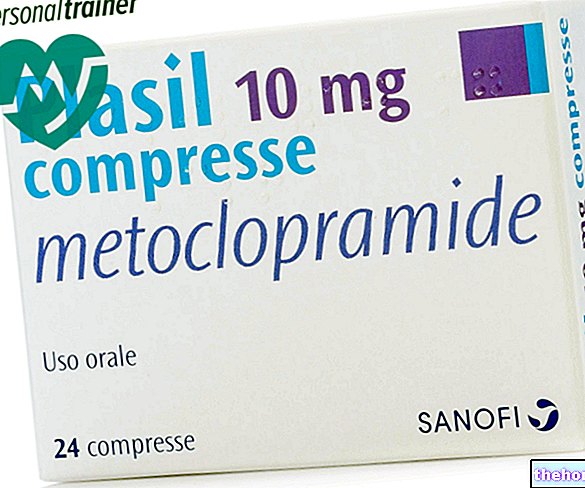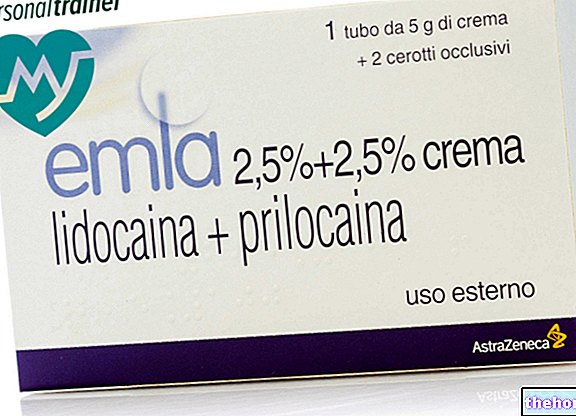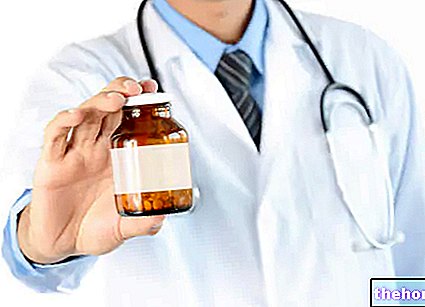Active ingredients: Bactolysate
PASPAT 3mg tablets
Why is Paspat used? What is it for?
PASPAT works contains inactivated bacteria that stimulate the body to produce antibodies (proteins that protect it against germs that cause infectious diseases.
PASPAT is used in adults for the prophylaxis of recurrent infectious diseases of the respiratory tract (nose, throat including tonsils, bronchi and lungs). ). the product can help reduce the number and intensity of infectious episodes in certain patients.
PASPAT is used in children for prophylaxis of recurrent infections of the upper respiratory tract (nose, throat including tonsils), in children with a number of episodes higher than expected for age. The product can help reduce the number and intensity of infectious episodes.
Talk to your doctor if you / your child do not feel better or feel worse.
Contraindications When Paspat should not be used
Do not take / give your child PASPAT
- if you or your allergic child are allergic to the active substances or any of the other ingredients of this medicine
- if you or your child have a fever. In these cases, treatment must be postponed
- if you are pregnant
- if you or your child have autoimmune diseases (diseases of the immune system that reacts against organs and tissues in your body)
- if you or your child have ongoing intestinal infections.
Precautions for use What you need to know before taking Paspat
Talk to your doctor or pharmacist before taking / giving your child PASPAT:
- If you or your child have a fever, particularly at the start of treatment: Stop taking PASPAT.
He may experience high fever over 39 ° C, isolated and without known cause and the type of fever must be differentiated from the fever that arises as a result of the original pathology, based on the laryngeal, nasal or otological conditions. In which case the treatment must be suspended and not resumed. (see section 4 'Possible side effects) Your doctor will explain to you the difference from the fever that has arisen for infections that you / your child often suffer from.
- If you / your child have or are predisposed to asthma. If you experience an asthma attack, stop taking PASPAT.
- If you / your child is taking another immunostimulant. Do not also take / give your child PASPAT.
- If you / your child have an allergic reaction. Stop taking adult / child PASPAT immediately and contact your doctor (see section 4 "Possible side effects).
Interactions Which drugs or foods can change the effect of Paspat
Tell your doctor or pharmacist if you / your child are taking, have recently taken or might take any other medicines.
Tell your doctor if you / your child are taking:
- immunosuppressants (drugs that prevent your immune system, the defense system against disease, from fighting against infections). Paspat must not be given if you are taking such medicines
- if you or your child need to receive any vaccine, it is important that at least 4 weeks pass between the end of treatment with Buccalin and the administration of the new vaccine.
- corticosteroids, medicines to treat "inflammation. Paspat should not be given if you are taking such medicines
PASPAT with food and drink
The medicine should be taken on an empty stomach
Warnings It is important to know that:
Pregnancy and breastfeeding
Pregnancy
Do not take PASPAT during pregnancy
Feeding time
Do not take PASPAT while breastfeeding
Driving and using machines
PASPAT does not affect the ability to drive vehicles (e.g. bicycle) or to use machines.
Dosage and method of use How to use Paspat: Dosage
Always take / give your child this medicine exactly as your doctor or pharmacist has told you. If in doubt, consult your doctor or pharmacist.
The recommended dose is 1 tablet per day of PASPAT, to be taken on an empty stomach in the morning with a little water.
Take / give your child PASPAT for 14-28 days. Then stop the treatment for 14-28 days.
Then take / give the child PASPAT for an additional 14-28 days.
If necessary, the doctor can provide for further treatment periods interspersed with periods of suspension.
If you forget to take / give your child PASPAT
Do not take a double dose to make up for a forgotten dose.
If you stop taking PASPAT / giving your child
If you have any further questions on the use of this medicine, ask your doctor or pharmacist.
Overdose What to do if you have taken too much Paspat
If you have taken / given your child too much PASPAT contact your doctor or go to a hospital immediately.
Side Effects What are the side effects of Paspat
Like all medicines, this medicine can cause side effects, although not everybody gets them.
If you / your child experience allergic reactions, stop the treatment.
The other side effects reported for PASPAT are listed below according to frequency:
uncommon (may affect up to 1 in 100 people)
- stomach and intestinal disorders
- skin rash (rash)
very rare (may affect up to 1 in 10,000 people)
- joint pains
- fever
- decrease in the number of platelets (thrombocytopenia)
Reporting of side effects
If you / your child get any side effects, talk to your doctor. This includes any possible side effects not listed in this leaflet. You can also report side effects directly via the national reporting system at www.agenziafarmaco.gov.it/it/responsabili. By reporting side effects you can help provide more information on the safety of this medicine.
Expiry and Retention
Keep this medicine out of the sight and reach of children.
This medicinal product does not require any special storage temperatures.
Do not use this medicine after the expiry date which is stated on the carton after EXP. The expiry date refers to the last day of that month.
Do not throw any medicines via wastewater or household waste. Ask your pharmacist how to throw away medicines you no longer use. This will help protect the environment.
Other information
What PASPAT contains
- The active ingredients contained in a tablet are at least 1x109 of bacterial lysate of Staphylococcus aureus, Streptococcus mitis, Streptococcus pyogenes, Streptococcus pneumoniae, Klebsiella pneumoniae Branhamella catarrhalis, Haemophilus influenzae equal to 3 mg.
- The other ingredients are mannitol, microcrystalline cellulose, sodium starch glycolate, magnesium stearate, anhydrous colloidal silica.
Description of what PASPAT looks like and contents of the pack
PASPAT comes in the form of white tablets.
It is available in a pack of 28 tablets.
Source Package Leaflet: AIFA (Italian Medicines Agency). Content published in January 2016. The information present may not be up-to-date.
To have access to the most up-to-date version, it is advisable to access the AIFA (Italian Medicines Agency) website. Disclaimer and useful information.
01.0 NAME OF THE MEDICINAL PRODUCT
PASPAT 3 MG TABLETS
02.0 QUALITATIVE AND QUANTITATIVE COMPOSITION
Each tablet contains: Active ingredient: Bacterial lysate containing at least
1X109 germs of the following strains:
Staphylococcus aureus, Streptococcus mitis, Streptococcus pyogenes, Streptococcus pneumoniae, Klebsiella pneumoniae, Branhamella catarrhalis, Haemophilus influenzae 3.00 mg
For excipients, see 6.1. Excipients with known effects: mannitol
03.0 PHARMACEUTICAL FORM
Tablets, for oral use
04.0 CLINICAL INFORMATION
04.1 Therapeutic indications
Adults Prophylaxis of recurrent respiratory tract infections: the product can contribute, in certain patients, to reduce the number and intensity of infectious episodes;
Children Prophylaxis of recurrent upper respiratory tract infections in children with more episodes than expected for age. The product can help reduce the number and intensity of infectious episodes;
04.2 Posology and method of administration
The daily dosage, unless otherwise prescribed, is one tablet per day for both adults and children to be taken with a sip of water on an empty stomach.
The therapeutic scheme includes:
• a treatment period of 14-28 days
• a suspension period of 14-28 days
• an additional treatment period of 14-28 days
If necessary, the doctor can provide for further treatment periods interspersed with periods of suspension.
04.3 Contraindications
Hypersensitivity to the active substance or to any of the excipients. Pregnancy (see section 4.6).
Autoimmune Diseases. Acute intestinal infections.
04.4 Special warnings and appropriate precautions for use
Treatment should be postponed and suspended in case of fever, particularly at the start of treatment.
The patient should be informed of the possibility as a rare undesirable event of elevated fever over 39 ° C, isolated and with no known cause, and the type of fever should be differentiated from fever arising as a result of the original disease, based on laryngeal, nasal or otological, in which case the treatment must be suspended and not resumed.
Concomitant intake of another immunostimulant should be avoided.
In some cases the onset of asthma attacks has been observed in predisposed patients after taking drugs containing bacterial extracts. In this case, Paspat should not be taken further.
In case of hypersensitivity reactions, treatment should be stopped immediately and not restarted.
Keep this medicine out of the sight and reach of children.
04.5 Interactions with other medicinal products and other forms of interaction
No interaction studies have been performed. An interval of 4 weeks is recommended between the end of treatment with Paspat and the start of administration of a vaccine. The immune response may be inhibited in subjects with congenital or acquired immunodeficiency, on immunosuppressive therapy or with corticosteroids.
04.6 Pregnancy and breastfeeding
Pregnancy
There is insufficient clinical documentation on the use of Paspat in pregnancy and therefore the use of the product should be avoided.
Feeding time
As far as breastfeeding is concerned, as no specific studies have been performed and there are no data available, the use of the product should be avoided.
04.7 Effects on ability to drive and use machines
Pas Pat does not affect the ability to drive or use machines
04.8 Undesirable effects
The following table summarizes the adverse reactions from Paspat.
The following terminology was used to classify the frequency of adverse reactions: very common (≥1 / 10); common (≥1 / 100,
Reporting of suspected adverse reactions
The reporting of suspected adverse reactions occurring after authorization of the medicinal product is important, as it allows continuous monitoring of the benefit / risk ratio of the medicinal product. Healthcare professionals are asked to report any suspected adverse reactions to their Territorial Reference Center for Pharmacovigilance or through the Italian Medicines Agency, website http://www.agenziafarmaco.gov.it/it/responsabili
04.9 Overdose
No cases of intoxication have been reported.
05.0 PHARMACOLOGICAL PROPERTIES
05.1 Pharmacodynamic properties
Pharmacotherapeutic group: Other bacterial vaccines
ATC code: J07AX
The activity of PASPAT is based on the stimulation of the common mucosal immune system.
By stimulating intestinal lymphoid tissue, the antigen induces an increase in specific immunities on the entire mucosa. In addition, PASPAT also stimulates various non-specific defense mechanisms.
Experimental studies have documented the following effects of PASPAT on the specific and non-specific immune system:
• increase of IgA producing cells in Peyer's plaques
• increase in secretory IgA in the mucous membranes
• increase in serum IgA
• increase in phagocytic activity
05.2 Pharmacokinetic properties
The antigenic structures contained in PASPAT are absorbed by the intestinal epithelium and are transferred to the cells of the intestinal immune system. Consequently, defense mechanisms are induced throughout the surface immune system including that of the mucosa of the bronchial tract.
05.3 Preclinical safety data
Both acute toxicity studies and subacute and chronic toxicity studies (26 weeks at a posology up to 900 times that indicated in man) show no signs of a toxic effect of PASPAT.
In embryotoxicity, teratogenicity and fertility studies, no effects attributable to the product were observed.
The high-dose peri-postnatal toxicity study shows a slight decrease in the live birth index at a dose 600 times that indicated in humans.
In vitro and one in vivo mutagenicity studies demonstrate that PASPAT does not exhibit any genotoxic activity.
06.0 PHARMACEUTICAL INFORMATION
06.1 Excipients
Mannitol, microcrystalline cellulose, sodium starch glycolate, magnesium stearate, anhydrous colloidal silica.
06.2 Incompatibility
Not relevant
06.3 Period of validity
2 years
06.4 Special precautions for storage
This medicine does not require any special storage conditions
06.5 Nature of the immediate packaging and contents of the package
Box of 28 tablets contained in two blisters
Aluminum / Polyamide / PVC / Aluminum.
06.6 Instructions for use and handling
No particular education
07.0 MARKETING AUTHORIZATION HOLDER
Daiichi Sankyo Italy S.p.A. - Via Paolo di Dono, 73 - 00142 ROME
08.0 MARKETING AUTHORIZATION NUMBER
28 Tablets code no. 028790018
09.0 DATE OF FIRST AUTHORIZATION OR RENEWAL OF THE AUTHORIZATION
November 1994 / November 2009























-nelle-carni-di-maiale.jpg)




